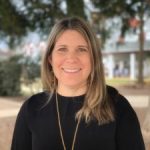PROOF POINTS: New answers to old questions about special education

Get important education news and analysis delivered straight to your inbox
The federal requirement for schools to provide extra services to children with disabilities has been around for more than 45 years. More than 7 million children, about 14 percent of all public school students, now receive services. Although it costs state, local and federal governments an estimated $90 billion a year, we know very little about whether special education services are actually helping students with disabilities learn more.
Special education is a particularly elusive area to evaluate because no one wants to randomly assign students to services to see if the ones who get them do better than those who don’t, as in a vaccine trial.
A group of economists found a clever way around this problem by studying 24,000 elementary and middle school students who were diagnosed with a specific learning disability from 2006 to 2012 in New York City, the largest school district in the country. They compared the kids’ academic performance before they were diagnosed and after they started receiving services. Test score improvements for students with learning disabilities were generally stronger after diagnosis, equal to 18 percent of the usual disparity in math achievement between students with disabilities and those without disabilities. In reading, the benefits of special ed were equivalent to 16 percent of this achievement gap.
“They’re closing the gap with their general education peers by about a sixth,” said Amy Ellen Schwartz, lead author of the study, and a professor at the Maxwell School of Citizenship and Public Affairs at Syracuse University. “Their performance [in special ed] jumps up compared to other peers with learning disabilities who are not yet diagnosed” and still part of the general education population.
The study, “The Effects of Special Education on the Academic Performance of Students with Learning Disabilities,” was published in January 2021 in the Journal of Policy Analysis and Management, and it attracted the attention of fellow education researchers.
“I think this study is valuable because we have truly few pieces of clear causal evidence that providing students with special ed services makes a difference to their academic outcomes,” said Joshua Goodman, a professor at Boston University who was not involved in this study, via email. “It’s actually shocking that we have so little evidence given how much we spend on such services.”
The New York study focused only on children with specific learning disabilities, which is the largest disability category. It primarily refers to dyslexia and related reading and math disabilities, such as dyscalculia, dysgraphia and dyspraxia, but defies easy description. There aren’t precise cutoffs for diagnosis and evaluators use their discretion, which varies a lot from state to state and from expert to expert. Diagnosis of this learning disability category grew rapidly in the 1980s and 1990s and accounts for a third of all students receiving free special education services in school. Special education services may well prove to be much more or much less effective for other disabilities, such as Down’s Syndrome, blindness or deafness.
The researchers narrowed their analysis to students who were diagnosed with learning disabilities between fourth and seventh grades because they relied on annual state exams, which are administered in only grades three through eight, to measure academic performance. Even students who were diagnosed with a learning disability in third grade could not be evaluated here because researchers needed to use the third grade test as a baseline for judging learning improvements. It’s possible that students who are diagnosed before fourth grade or after seventh grade might reap larger benefits or none at all.
In the study, students who were diagnosed earlier, in either fourth or fifth grades, had better academic outcomes than students diagnosed later, in either sixth or seventh grades. But it could also be the case that kids who were diagnosed when they were older had less severe forms of dyslexia and thus had less to gain from the services. The researchers had no way of knowing the severity of each child’s disability.
The researchers also found big and troubling racial differences. Asians who received special education reaped the largest academic gains from the services. By contrast, Black students made tiny academic gains, almost zero on average, after being placed in special ed compared to other Black students with learning disabilities who were still undiagnosed.
One possible explanation for the racial differences might also be related to the severity of the dyslexia. Asians are far less frequently diagnosed with learning disabilities — only 6 percent of the students with learning disabilities in this study were Asian even though Asians made up 15 percent of the broader student population. That’s evidence that Asian parents might resist a special education classification for their children and only those with the most severe disabilities get diagnosed. “Perhaps, those with the greatest potential to benefit from services, are classified into special education,” the authors wrote.
By contrast, 35 percent of the New York City children with learning disabilities were Black students, exceeding their 31 percent share of the student population. That could mean ”that there are Black boys who are unnecessarily classified in special education and it is not helpful for them,” the authors wrote. It could also be the case that many Black children are getting properly diagnosed for mild learning disabilities but that special education services don’t give much of a boost for children with mild cases.
The researchers looked into how the services were delivered to each student but weren’t able to draw conclusions as to whether some approaches are more effective than others. Two-thirds of the students learned in regular general education classrooms most of the time and were pulled out as needed for their services. Almost 30 percent of the students were in integrated co-teaching classrooms, or ICTs, where two teachers, one with special education training, jointly provided instruction to a class of children with and without disabilities. Only five percent learned separately in a special-needs only environment. There was no way to discern from this administrative data exactly which intervention programs educators were using or how many hours of extra services each student received.
This is not the first study to attempt to calculate the benefit of special education. A study of Texas students published in 2002 arrived at nearly the identical numerical result as this new New York City study. More recently, a much smaller 2019 study found almost double the benefits for special education in Kentucky. In our decentralized education system, it’s not surprising that different cities and states intervene with special education students more effectively than others. But the researchers’ methodologies, which were different in the prior studies, can also influence these quantitative results. Schwartz, the author of this New York study, is now studying children with disabilities in Massachusetts.
The average per student price tag for special education services is generally more than twice the cost of educating a general education student. Whether the billions spent on special education are worth the relatively small academic gains that the researchers found is a judgment call. Critics of this type of test-score analysis argue that we should judge special ed by more than how much it increases students’ test scores. When I interviewed Schwartz, she agreed that there are many other outcomes we care about, such as high school graduation, going to college and securing a good job later in life. “I’m hoping there will be a lot more research in special education,” said Schwartz.
This story about students with learning disabilities was written by Jill Barshay and produced by The Hechinger Report, a nonprofit, independent news organization focused on inequality and innovation in education. Sign up for the Hechinger newsletter.
Published at Mon, 01 Feb 2021 11:00:00 +0000



